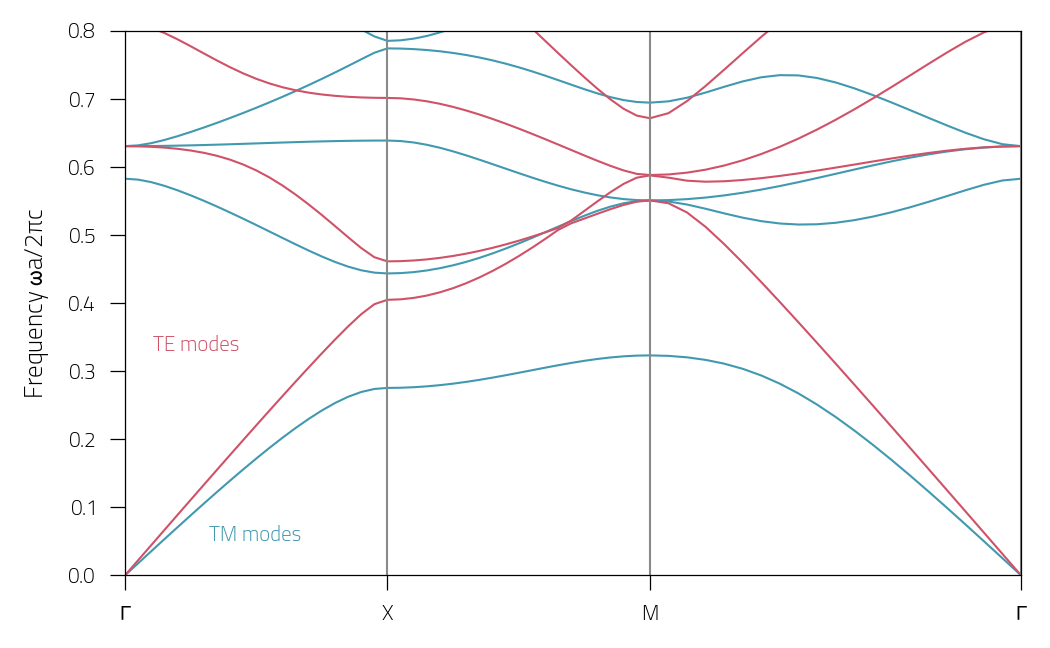Note
Go to the end to download the full example code. or to run this example in your browser via Binder
Band diagram of 2D photonic crystal#
Calculation of the band diagram of a two-dimensional photonic crystal.
Reference results are taken from [Joannopoulos2008] (Chapter 5 Fig. 2).
The structure is a square lattice of dielectric
columns, with radius r and dielectric constant \(\varepsilon\).
The material is invariant along the z direction and periodic along
\(x\) and \(y\) with lattice constant \(a\).
We will define the lattie using the class Lattice
Define the permittivity
We define here the wavevector path:
Calculate the band diagram:
sim = pt.Simulation(lattice, epsilon=epsilon, nh=100)
BD = {}
for polarization in ["TE", "TM"]:
ev_band = []
for kx, ky in kpath:
sim.k = kx, ky
sim.solve(polarization, vectors=False)
ev_norma = sim.eigenvalues * a / (2 * pi)
ev_band.append(ev_norma)
BD[polarization] = ev_band
BD["TM"] = pt.backend.stack(BD["TM"]).real
BD["TE"] = pt.backend.stack(BD["TE"]).real
Plot the bands:
labels = ["$\Gamma$", "$X$", "$M$", "$\Gamma$"]
plt.figure()
plotTM = pt.plot_bands(sym_points, Nb, BD["TM"], color="#4199b0")
plotTE = pt.plot_bands(sym_points, Nb, BD["TE"], xtickslabels=labels, color="#cf5268")
plt.annotate("TM modes", (1, 0.05), c="#4199b0")
plt.annotate("TE modes", (0.33, 0.33), c="#cf5268")
plt.ylim(0, 0.8)
plt.ylabel(r"Frequency $\omega a/2\pi c$")
plt.tight_layout()

/builds/protis/protis.gitlab.io/protis/examples/plot_phc.py:74: SyntaxWarning: invalid escape sequence '\G'
labels = ["$\Gamma$", "$X$", "$M$", "$\Gamma$"]
/builds/protis/protis.gitlab.io/protis/examples/plot_phc.py:74: SyntaxWarning: invalid escape sequence '\G'
labels = ["$\Gamma$", "$X$", "$M$", "$\Gamma$"]
Total running time of the script: (0 minutes 1.342 seconds)
Estimated memory usage: 540 MB

